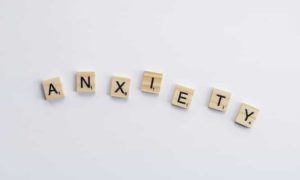Managing Social Anxiety
Managing Social Anxiety
 There are many actions you can take to manage your social anxiety. At any given point, social anxiety disorder is expected to affect about 12 percent of the population. People with social anxiety struggle with many aspects of their lives. In some cases, people with social anxiety have difficulty making friends, managing relationships, finding jobs, and navigating other ordinary interactions.
There are many actions you can take to manage your social anxiety. At any given point, social anxiety disorder is expected to affect about 12 percent of the population. People with social anxiety struggle with many aspects of their lives. In some cases, people with social anxiety have difficulty making friends, managing relationships, finding jobs, and navigating other ordinary interactions.
Social anxiety disorder can be severely crippling, and may be treated by cognitive-behavioral therapy (CBT) and/or medicine. For less severe cases, there are a many self-help actions that can be taken.
Get yourself out there
You may feel like you’re in a slump almost all the time when dealing with mild to severe social anxiety. What is the most effective way to break out of that slump? Trying to make a change!
If you are suffering from social anxiety disorder, escaping social and competitive environments will seem like the most attractive option, but putting yourself out there is vital. That includes accepting invites to go to events and doing activities that put you out of your comfort zone. Do your best to get out there and see how it goes, you may find that it’s not as bad as you expected!
Asking for help
Do not wait to seek help until your anxiety becomes extreme. Consider scheduling an appointment to meet with a professional when you realize that the anxiety is keeping you from everyday activities. To get started, you could try contacting a psychiatric helpline over the phone so you can avoid the in-person visit if that makes you uncomfortable. You may find it a little less daunting to speak to a professional from the comfort of your home. If so, teletherapy might be suitable to help you address your concerns. Asking for assistance with anxiety may seem daunting, but you may find it well worth the effort after you take the first move.
Work on your fitness
 Do everything in your ability to make sure that physical concerns do not add to your anxiety issues. Regular exercise is important, varying from aerobic fitness to weight training, as well as a safe, nutritious diet. Do your best to stay hydrated. To lower the nerves, try sipping on some chamomile tea.
Do everything in your ability to make sure that physical concerns do not add to your anxiety issues. Regular exercise is important, varying from aerobic fitness to weight training, as well as a safe, nutritious diet. Do your best to stay hydrated. To lower the nerves, try sipping on some chamomile tea.
There are several physical activities that do not require the money or the time that health clubs or personal training sessions require. Consider cycling or biking at home or doing yoga. There are other minor changes such as taking stairs instead of the elevator, reducing the intake of junk food, avoiding smoking, and many more. Ensure you leave no stone unturned when it comes to addressing your physical wellness to minimize your social anxiety.
Be Your Own Cheerleader
No one else will look out for your wellbeing as much as you will. Look for local resources so that you can reach out for help if needed. Ask for help at school or work if you feel comfortable. Share your challenges with close friends and family. If you feel the need, take a quick break away from others at social gatherings. Advocate for yourself and ask for help when needed.
Enjoy Simply Being On Your Own
Some individuals are naturally introverted, which involves spending time alone to refill their emotional battery. Spending time alone is a safe way to collect your thoughts and evaluate your feelings. Once you are comfortable being on your own, you can begin to expand your social interactions.
Try Saying Yes
Maybe you fell into the rut of responding “No” to everything. Try saying “Yes” to a few invitations or opportunities to shake things up. Even if you feel nervous at first, you may become comfortable over time. You could always leave a stressful situation if you feel the need. Next time you get an invitation to attend an office meeting or personal event, make the effort to branch out of your comfort zone. Put yourself out there!
